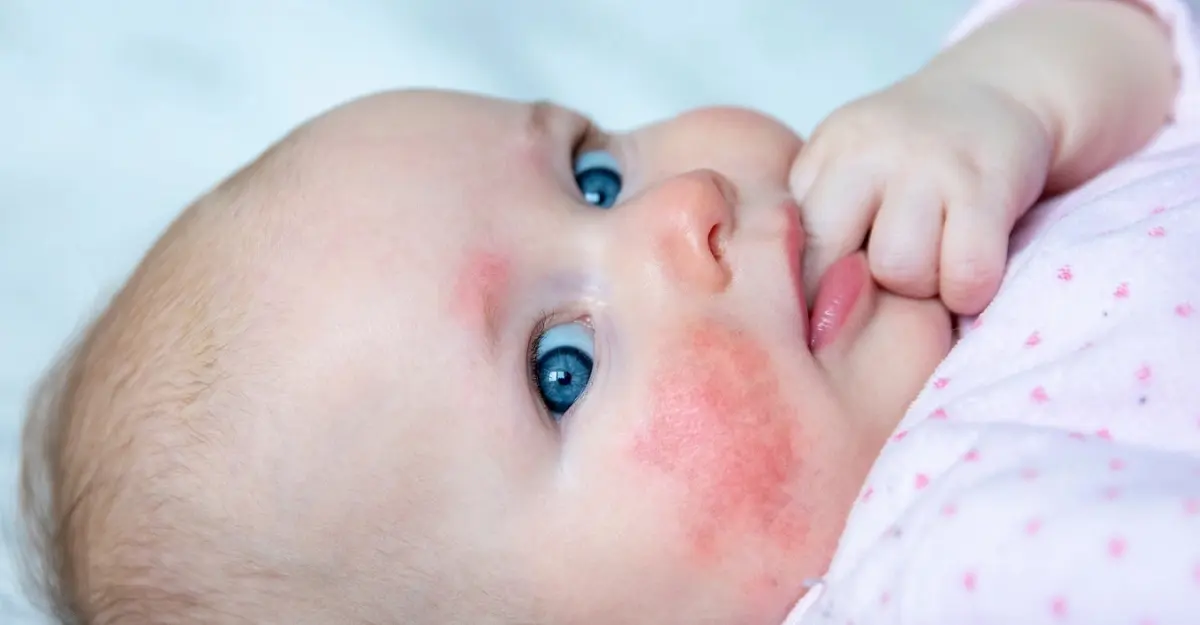Gentle Beginnings: Understanding Common Skin Rashes in Newborns
Welcoming a newborn into the world is filled with joy, but it also brings with it a fair share of questions and concerns, especially when unexpected changes appear on the baby’s skin. Skin rashes, spots, and birthmarks are among the most common issues that worry new parents. While these skin conditions may look unfamiliar or even alarming, most are completely harmless and disappear on their own with time. This article explores the most frequent types of rashes seen in newborns and aims to help parents understand what is normal and when there might be cause for concern.
Milia – Tiny White Pearls on the Skin
One of the most common skin findings in newborns is milia. These are tiny, pearl-like white spots, typically 1 to 2 millimeters in size. They most often appear on the baby’s cheeks, forehead, and nose. Sometimes, similar white spots can be seen inside the baby’s mouth, and when they occur there, they are known as Epstein’s Pearls. Milia are present in around half of all newborns and are a natural result of underdeveloped oil glands. Since they are not caused by any infection or allergy, they are entirely harmless. No creams, lotions, or medical treatments are needed. They usually clear up on their own within the first few weeks of life, making them one of the many skin changes that simply need a little time and patience.
Miliaria – The Effects of Heat on Newborn Skin
Another commonly seen condition is miliaria, often referred to as prickly heat. This occurs when a baby’s sweat glands become blocked, leading to tiny fluid-filled blisters or vesicles. These fragile vesicles can rupture easily and are more likely to appear in hot, humid environments. Overdressing the baby in heavy clothing can make miliaria worse. Although it may look uncomfortable, it is harmless. The best way to reduce miliaria is by keeping the baby in a cool, well-ventilated room and using light cotton clothing, especially during warm weather. Once the baby’s environment is adjusted, the rash usually resolves on its own without the need for medication.
Erythema Toxicum – A Common but Alarming Name
Erythema toxicum is another skin condition that can cause concern due to its name and appearance. Despite sounding severe, it is entirely benign. It shows up in nearly half of all newborns, usually within the first two days after birth. The rash appears as yellowish-white pustules surrounded by red patches and can be found anywhere on the body except the palms and soles. While it may resemble insect bites or small boils, erythema toxicum is not painful, not contagious, and not dangerous. It tends to come and go within a few hours to a few days. Since its cause remains unknown, there is no specific treatment. The best approach is to simply observe and allow the condition to resolve naturally.
Pustular Melanosis – Rare but Harmless
Pustular melanosis is less common than the other skin conditions mentioned but still falls within the range of normal newborn skin variations. It is present at birth and is recognized by clusters of superficial pustules that break easily. After they rupture, they leave behind dark-colored spots surrounded by fine white scales. These spots are most often seen on the baby’s forehead, under the chin, on the neck, and along the lower back. The pustules themselves usually disappear within a day or two, but the dark patches left behind can linger for several months. Despite their appearance, these lesions are not harmful and do not require treatment. They are not a result of infection or irritation and will eventually fade without leaving scars.
Salmon Patch – The “Stork Bite” or “Angel’s Kiss”
Among the more visibly gentle skin changes is the salmon patch. Found in about 40% of newborns, this condition presents as a flat, pinkish area with irregular edges. It commonly appears on the nape of the neck, eyelids, forehead, or near the nose. Sometimes affectionately called “stork bites” or “angel’s kisses,” these marks are due to dilated capillaries and are entirely benign. While they may become more visible when the baby cries or during temperature changes, they pose no risk. In most cases, the patches fade significantly during the first year of life, with the majority disappearing entirely by that time. No creams, ointments, or procedures are required.
Conclusion
In the early days of life, a newborn’s skin goes through many transitions as it adapts from the womb to the external environment. While rashes like milia, miliaria, erythema toxicum, pustular melanosis, and salmon patches may appear concerning at first, they are almost always harmless and self-limiting. Understanding these common skin conditions can offer reassurance and help avoid unnecessary treatments or worries. For any skin changes that seem unusual or persistent, consulting a pediatrician can offer additional peace of mind.
At KKCTH, the well-being of every newborn is a priority, and early guidance helps parents feel more confident as they begin their journey through infancy.




